Makaleler
Sanat Eserleri
Sayı Hakemleri
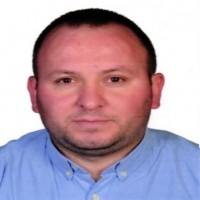
Çevre Sorunları , Coğrafya Eğitimi, Ekoloji, Sürdürülebilirlik ve Enerji, Doğal Afetler
Yrd. Doç. Dr.
Asu ERSOY
MANİSA CELÂL BAYAR ÜNİVERSİTESİ
Dilsel Yapılar (Fonoloji, Morfoloji ve Sözdizimi dahil), Dilbilim
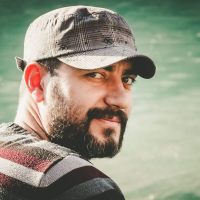
Görsel Sanatlar (Diğer), Alan Eğitimleri (Diğer), Güzel Sanatlar Eğitimi, Müze Eğitimi, Sanat Eğitimi (Diğer), Güzel Sanatlar

Din Psikolojisi
Dr. Öğr. Üyesi
Dilber TAHİROĞLU
Mardin Artuklu Üniversitesi
Türkiye Sahası Yeni Türk Edebiyatı
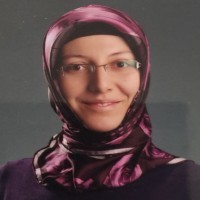
Eğitim, Temel Eğitim, Tasavvuf
Prof. Dr.
Erdal KOCABAŞ
NECMETTİN ERBAKAN ÜNİVERSİTESİ
Organik Kimyasal Sentez, Kimya
Biyoloji
Dr.
Esra Selcen YAKICI TOPBAŞ
GAZİ ÜNİVERSİTESİ, GAZİ EĞİTİM FAKÜLTESİ
Matematik Eğitimi

Doç. Dr.
Fatih USLU
AKDENİZ ÜNİVERSİTESİ
Aile Sosyolojisi
Bitki ve Mantar Sistematiği ve Taksonomi, Biyoloji, Bitki Morfolojisi ve Anatomisi, Etnobotanik

Prof. Dr.
Haluk ÖZPARLAK
SELÇUK ÜNİVERSİTESİ, FEN-EDEBİYAT FAKÜLTESİ, BİYOLOJİ BÖLÜMÜ, ZOOLOJİ ANABİLİM DALI
 0000-0002-2333-0219
0000-0002-2333-0219
 0000-0002-2333-0219
0000-0002-2333-0219
Hayvan Fizyolojisi - Ekofizyoloji, Hücre Metabolizması, Biyoloji

Türkiye Sahası Yeni Türk Edebiyatı
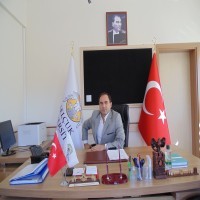
Viroloji, Hücre Metabolizması, Bitki ve Mantar Sistematiği ve Taksonomi, Mikoloji
Biyoloji
Prof. Dr.
Nurdan AKINER
AKDENİZ ÜNİVERSİTESİ, İLETİŞİM FAKÜLTESİ, RADYO, SİNEMA VE TELEVİZYON BÖLÜMÜ
Göç, Göstergebilim, Sinema (Diğer), Postkolonyal Çalışmalar, İletişim Çalışmaları, Gazetecilik Çalışmaları, Radyo-Televizyon, Ekran ve Medya Kültürü
Doç. Dr.
Recep BOZYİGİT
NECMETTİN ERBAKAN ÜNİVERSİTESİ, AHMET KELEŞOĞLU EĞİTİM FAKÜLTESİ
 0000-0002-9790-1168
0000-0002-9790-1168
 0000-0002-9790-1168
0000-0002-9790-1168
Fiziksel Coğrafya ve Çevre Jeolojisi

Coğrafya Eğitimi, Yerleşme Coğrafyası, Beşeri Coğrafyada Kent , Ekoloji, Sürdürülebilirlik ve Enerji, Ekonomik Coğrafya, Türkiye Beşeri Coğrafyası, Türkiye Ekonomik Coğrafyası, Beşeri Coğrafya
Omurgasız Biyolojisi, Entomoloji, Hayvan Sistematiği ve Taksonomi
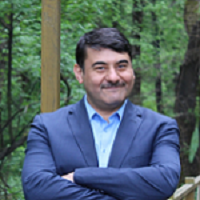
Prof. Dr.
Yakup POYRAZ
Kahramanmaraş Sütçü imam Üniversitesi İnsan ve Toplum Bilimleri Fakültesi Türk Dili ve Edebiyatı Bölümü
 0000-0003-2443-7533
0000-0003-2443-7533
 0000-0003-2443-7533
0000-0003-2443-7533
Klasik Türk Edebiyatı, Türk Dili ve Edebiyatı
Prof. Dr.
Ömer ÖZKAN
GAZİ ÜNİVERSİTESİ
Klasik Türk Edebiyatı, Türk Dili ve Edebiyatı
Din Psikolojisi
Din Eğitimi
Amaç ve Kapsam
Bilim Armonisi’ nin amacı özellikle Lise dengi okullar, Ön Lisans, Lisans ve Yüksek Lisans seviyesinde yer alan gençlerimizi bilimsel camia ve bilimsel misyon ile tanıştırmak, kendilerini, fikirlerini ifade edebilecekleri ve çalışmalarını paylaşabilecekleri evrensel bilim ve etik kurallarına dayalı bir bilimsel yayın ortamı hazırlamaktır.
Bilimin ve Sanatın tüm alanlarını kapsamaktadır.
Yazım Kuralları
BİLİM ARMONİSİ (BİL-AR)
BİLİMSEL YAZIM KURALLARI
VE
KAYNAK GÖSTERME
Hazırlayan
Özhan GÜVEN
Aydın YÜKSEK
Aralık 2021
ANTALYA
Bilim Armonisi Dergisi [BİL-AR] Yazım Kuralları
Hakemli dergi Bilim Armonisi’ne gönderilen Sayısal Bilimler, Eğitim Bilimleri, Sözel ve Beşeri Bilimler yazılardaki referans sistemi ve kaynakça düzenlemesinde, Bilim Armonisi yazım kuralları dikkate alınmalıdır.
1. Yazım Kuralları:
1. Derginin yayım ve yazım dili Türkçedir. Sadece abstract ve keywords kısımları İngilizce olacaktır.
2. Metin yazılırken 12 punto Times New Roman yazı fontu kullanılmalıdır.
3. Çizelgeler ve şekillerin alt yazılarında değişiklik olabilir, ancak 9 puntodan küçük olamaz.
4. Makalede sayısal bilimlerde kullanılan Latince isimlerin dışında italik yazı olmamalıdır.
5. Makale; Özet, Anahtar Kelimeler, Abstract, Keywords, Giriş, Materyal ve Metot, Bulgular, Sonuç ve Tartışma ile kaynaklar kısımlarını içermelidir. Ayrıca makalede ek kısımlar ve başlıklar da yer alabilir.
6. Makalenin özetinde en az 100 - en fazla 300 kelime kullanılmalıdır.
7. Makalenin özet kısmı hariç herhangi bir kelime sayısı sınırlaması yoktur.
8. Özet ve Abstract kısımlarında kaynak verilmemelidir.
9. Makale içerisinde numaralandırılmış bold (koyu) başlıklar kullanılmalı, alt başlıklar en fazla üçüncü seviyeye kadar inmelidir. Lütfen aşağıdaki örneği inceleyiniz.
Örnek:
1. GİRİŞ
1.1. Konu İle İlgili Yapılan Çalışmalar
1.1.1. Dünyada yapılan çalışmalar
1.1.2. Ülkemizde yapılan çalışmalar
1.2. Konunun Sosyal Etkileri
1.2.1. Konunun gençler üzerine etkileri
1.2.2. Konunun yetişkinler üzerine etkileri
10. Makalelerde kullanılacak olan tüm resim, çizim ve harita gibi görsel veriler "Şekil"; tablolar ise "çizelge" olarak adlandırılmalıdır. Figürlerin numaralandırılmasında süreklilik gözetilmelidir. Bu nedenle levha, resim, çizim, fotoğraf ve harita gibi farklı ifade ve kısaltmalar kullanılmamalıdır.
11. Makalede en az 3, en fazla 6 anahtar kelime kullanılmalıdır.
1.1. Metin İçi Göndermeler ve Kaynak Yazımı:
1.1.1.Makaleler:
(Okur 2017). (Metinde)
(Okur ve Yazar 2017). (Metinde)
(Canbulat vd. 2018). (Metinde)
Eğitim Bilimleri, Sözel ve Beşeri Bilimler alanlarında verilecek atıflarda sayfa numaraları yazar soyadı ve tarih belirtildikten sonra virgül sonrası verilir. (Okur 2017, 12).
Her üç atıf şeklinde yer alan kaynak, kaynakça bölümünde yazar bilgileri, makale başlığı (tırnak içinde yazılır.),dergi adı, cilt, sayı (parantez içinde), sayfa aralığı, varsa doi numarası şeklinde belirtilir.
Örnek 1
Okur, M. (2017). “Notalar üzerinden kültür aktarımı”. Bilim Armonisi, 1 (1): 1-5. doixxx.
Okur, A. A., Yazar, M.V. (2017). “Güzel bir makale 2”. Bilim Armonisi, 1 (2): 6-15. doixxxx.
Canbulat, M., Güven Ö., Çağlar, M. (2018). “Öğrenim Düzeylerine Göre Gençlik Dili Değişkesi”. Ijla, 5 (8): 111-126. İstanbul-Türkiye. doi: http://dx.doi.org/10.18033/ijla.3806.
Birden çok isimli yazarların adlarının baş harfleri boşluk bırakılmadan yazılır.
Örnek 2
Vieira, R.M., Tenreiro-Vieira, C., Martins, I.P. (2011). “Critical Thinking: Conceptual Clarification and Its Importance in Science Education”. Science Education International, 22(1): 43-54.
Metin içi atıflarda yazarın çalışmasından doğrudan alıntı yapılmışsa alınan kısım tırnak içine alınarak belirtilir. Dolaylı anlatımla verilen alıntılarda tırnak kullanılmaz. Tüm atıflarda yazarın soyadı ve eserin tarihi araya virgül konmaksızın belirtilir ( Yüksek 2015). Göndermede tarih olarak yıl bilgisi kullanılır, başka bir tarih bilgisi kullanılmaz.
Metin içinde atıfta bulunulan yazar ve eser isimleri iki farklı şekilde yapılabilir:
Örnek 3
*Güven (2018), yaptığı çalışma ile öğretmenlerin sınıf içi etkileşiminin doğru beden dilinin kullanımına ve etkili konuşmaya bağlı olduğunu belirtmiştir. Şeklinde verilmelidir. Ya da
**Öğretmenin sınıf içinde doğru beden dilini ve etkili konuşma becerilerini kullanması, kendini rol model alan öğrenci üzerinde son derece etkilidir (Güven 2018, 7).
Eğitim Bilimleri, Sözel ve Beşeri Bilimler alanlarında verilecek atıflarda sayfa numaraları yazar soyadı ve tarih belirtildikten sonra virgül sonrası verilir. Sayısal bilimlerde sayfa numarası zorunluluğu aranmaz.
Kültürün dile yansıyan öğelerinden olan kalıp sözler, dil öğretiminde önemli bir işleve sahiptir (Canbulat 2013, 217).
Sayısal Bilimlerde sayfa numarası zorunluluğu aranmaz.
Aynı yazarın aynı eseri paragraf boyunca birden fazla kullanılacaksa ilk kullanımda atıf bilgilerinin verilmesi yeterlidir.
Örnek 4
Börekçi (2009, 30), dili tanımlarken onun kendine özgülüğünün yanında evrenselliğinden bahseder ve dili bir sanat eserine benzetir. Börekçi ’ye göre dil, duygularla zihin arasında bir yoldur. Gördüğümüz, duyduğumuz, dokunduğumuz varlıkları, dil kendine özgü biçimlerle fikir dünyamıza taşır. Nesnel/evrensel gerçeklik, öznel/toplumsal yoruma dil yardımı ile dönüşür. Bu sebeple her türlü sanat öncelikle dile ihtiyaç duyar.
Metin içinde atıfta bulunulacak eserin iki yazarı varsa iki yazar da belirtilir.
Örnek 5
Türkçenin dil değişkeleri incelendiğinde gençlik dilinin de kendine özgü kullanım şekillerinin olduğu görülür ( Güven ve Çağlar 2017).
İkiden fazla yazarlı çalışmalara gönderme yapılacaksa ilk yazardan sonraki yazarlar vd. olarak belirtilir.
Örnek 6
İlkokul ve ortaokul düzeyinde, erkek öğrencilerin kız öğrencilere oranla matematik konusunda başarılı olduğu çalışmalar neticesinde görülmüştür (Cohen vd. 1998).
Kaynakça kısmında tüm yazarlar açıkça belirtilmedir.
Aynı göndermede birden fazla çalışmadan faydalanılan durumlarda çalışmalar tarih sırasına göre yazılır. Çalışmalar, noktalı virgülle ayrılır.
Örnek 7
Kemoterapi ilaçları, etki özellikleriyle ilgili olarak, bireyde rahatsız edici bir dizi yan etkilere yol açabilmektedir (Thompson vd. 1997, White 2001).
Çalışmada yapılan tüm göndermeler, birbiriyle uyumlu bir şekilde kaynakçada mutlaka olmalıdır.
1.1.2.Tek yazarlı Kitaplar
Tek yazarlı kitapların aktarımında sayısal bilimler ile eğitim bilimleri, sözel ve beşeri bilimlerin metin içi atıfları (Soyadı, yıl) şeklinde yapılır.
Örnek 8
(Pamukçu 2000, 27). (Metinde)
Pamukçu, K. (2000). Su Politikası: Bağlam Yayıncılık. Ankara- Türkiye.
Sayısal bilimlerde metin içinde yazar ve yıl alınırken sayfa sayısına yer verilmez.
1.1.3.İki veya Daha Fazla Yazarlı Kitaplar:
Metin içinde atıfta bulunulacak kitabın iki yazarı varsa iki yazar da belirtilir.
Örnek 9
(Yüksek ve Güven 2011, 22).
Yüksek, A., Güven, Ö. (2011). Türkçe Öğretiminde Yaratıcı Yazarlık Uygulamaları: Güven Yayınevi Antalya-Türkiye
İkiden fazla yazarlı çalışmalara gönderme yapılacaksa ilk yazardan sonraki yazarlar vd. olarak belirtilir.
Örnek 10
(Büyüköztürk vd. 2010). metinde ya da Büyüköztürk ve diğerleri (2010),
Büyüköztürk, Ş., Kılıç-Çakmak, E., Akgün, Ö. E., Karadeniz, Ş., Demirel, F. (2010). Bilimsel Araştırma Yöntemleri: Pegem. Ankara-Türkiye.
1.1.4.Ciltli Kitaplarda Gönderme Yapılan Çalışmalar:
Ciltli kitaplara gönderme yapılan çalışmalarda yazar bilgisine, cilt sayısına ve kitabın kullanılan cildindeki sayfa aralığına yer verilir. Tüm ciltten faydalanılmış ise yalnızca cilt sayısı verilmelidir.
Örnek 11
Birden fazla ciltli kaynak: yazar tarih, cilt no: sayfa aralığı şeklinde verilir. Sayısal bilimlerde sayfa aralığı zorunluluğu aranmaz.
(Banarlı 2001, 2: 185-189). ya da Banarlı (2001, 2: 185-189).
Banarlı, Nihat Sami (2001), Türk Edebiyat Tarihi, İstanbul: MEB Yayınları.
Cildin tamamına gönderme yapılan durumlarda: (Banarlı 2001, 2. cilt). ya da Banarlı (2001, 2. cilt)
1.1.5.Editörlü Kitaplar
Editörlü kitaplarda bölüm yazarının/yazarlarının soyadı ve yılı yazılır.
Örnek 12
(Öz vd. 2018).
Editörlü kitap, kaynakçada belirtilecekse editör adı/adları kaynak bölümünde yazılır ve (Ed.) şeklinde gösterilir.
Editörlü bir kitapta yalnız bir bölüme atıf yapılacaksa önce bölümün yazarı yılı, tırnak içinde bölüm başlığı sonra editör ve kitabın adı, yayınevi, yayın yeri şeklinde yazılır.
Örnek 13
Öz, M., Aslan, A., Yavuz, M., Tunç, M.R. (2018). “Fauna”. Üstüner, H., Yavuz, M. (Ed.). Beydağları Sahil Milli Parkının Florası, Faunası ve Likenleri: Özge Ofset. Antalya-Türkiye, 45-56.
1.1.6.Çeviri Kitaplar:
Çevirili eserlerde çevirmenin değil yazarın ismine atıfta bulunulur.
Örnek 14
(De Saussure 1916).
Çeviri ve derleme kitaplar kaynakçada verilirken önce yazar bilgileri yılı, tırnak içinde kitap adı sonra çeviren bilgisi ve kitabın adı, yılı, yayınevi, yayın yeri şeklinde yazılır.
Örnek 15
De Saussure, F. (1916), “Cours de linguistique generale”. Vardar B. (çev.) Genel Dilbilim Dersleri (1998): Multilingual Yayınları, İstanbul-Türkiye.
1.1.7.Komisyon ve Kurumlarca Yazılan Çalışmalar:
Komisyon, kurum, kuruluş ve dernekler gibi gruplar vasıtasıyla yazılmış/yayımlanmış yazılara gönderme yapılacaksa ilk göndermede alıntının yapıldığı oluşum, uzun şekliyle açıkça yazılır. Lüzum görülürse kısaltması da aynı atıfta ayrıca belirtilebilir. Diğer göndermelerde kısaltmaya başvurulabilir. Kaynakçada da bu durum geçerlidir.
Örnek 16
Türkiye İstatistik Kurumu (TÜİK 2017) verilerine göre… (Metinde ilk kullanım için)
TÜİK (2017) verilerine göre… (Metin içinde sonraki kullanımlarda)
Türkiye İstatistik Kurumu [TÜİK] (2017). “Hanehalkı Bilişim Teknolojileri Kullanım Araştırması”. Erişim adresi: http://tuik.gov.tr/PreHaberBultenleri.do?id=13569. Son Erişim Tarihi: 26.02.2018. (Kaynakçada)
1.1.8.Aktarım Yapılan Kaynaklar:
Yazarın çalışmasına birincil elden ulaşılamayan durumlarda ikinci bir yazar üzerinden aktarım yapılabilir. Bu tür kullanımlarda çalışma sahibi asıl yazar ile birlikte çalışmanın tarihi gerekliyse sayfa sayısı ile birlikte aktarımın yapıldığı yazar bilgisine de yer verilir.
Örnek 17
Yabancı dil öğrenmedeki temel nedenleri Harmer (1991), bireye göre değişkenlik gösteren kişisel amaçlar, yabancı kültürlere yönelik kültürel ilgi, hedef toplumda geçici olarak ya da sürekli bulunmaya bağlı gereklilik, mesleki gerekçeler, eğitime bağlı öğrenme durumu olarak açıklar (Harmer’den aktaran Aydın ve Zengin 2008, 2).
Aktaran bilgisi ‘akt’ kısaltması ile de verilebilir (Harmer’den akt. Aydın ve Zengin 2008, 2).
Sayısal bilimlerde sayfa sayısı zorunluluğu aranmaz.
Kaynakça kısmında aktarımın yapıldığı yazar ve çalışmaya yer verilir.
Örnek 18
Aydın, S. ve Zengin, B. (2008). “Yabancı dil öğreniminde kaygı: Bir literatür özeti”. Journal of Language
and Linguistic Studies, 4 (1), 81-94.
1.1.9.Tez (Doktora- Yüksek Lisans)
Tez ve doktora çalışmalarının metin için göndermeleri diğer çalışmalarla aynıdır. Kaynakça kısmında yazar bilgisi ve yıl belirtildikten sonra çalışmanın ismi tırnak içine alınır. Doktora ve yüksek lisans bilgisi, çalışmanın yapıldığı üniversite, şehir ve ülke bilgilerine yer verilir.
Örnek 19
(Okur 2017) -----Metinde (sayısal bilimler)
Okur (2017, 56) ---Metinde (Sözel ve beşeri bilimler)
Okur, A. A. (2017). “Deneme bir tez”. Yayınlanmamış Doktora Tezi, Akdeniz Üniversitesi. Antalya-Türkiye.
1.1.10.Kongre-Sempozyum, Sunum ve Yayınları
Metin içi atıfta bulunulan kongre-sempozyum, sunum ve yayınlarda çalışmayı/sunumu yapan kişi/kişilerin bilgileri ve sunum tarihi verilir. Kaynakçada konu başlığı tırnak içine alınır. Çalışmanın aldığı dergi, bildiri vb kaynağa da kaynakçada yer verilir. Eğitim Bilimleri, Sözel ve Beşeri Bilimler alanlarındaki alıntıların sayfa aralığı da ayrıca belirtilir.
Örnek 20
(Okur vd 2017) -----Metinde (Sayısal bilimler)
Okur vd (2017, 305) ------ Metinde (Sözel ve beşeri bilimler)
Okur, A. A., Yazar, M.V., Çizer, F. (2017). “Güzel bir sunum”. Bilim Armonisi Kongresi-I, Özet Kitapçığı, 5-10.
1.1.11.Bir yazarın aynı yılda yayımlanmış birden fazla yayınına atıf
Aynı yazarın aynı yılda yayımlanmış birden fazla yayınına atıf yapılacaksa atıf bilgileri alfabetik kodlama ile belirtilir. Kodlama metindeki yerine göre yapılır. İlk önce kullanılan yayın a ile başlar.
Örnek 21
Güven (2019a)------------------- Metinde (Sayısal bilimler)
(Güven 2019b) ------------------Metinde (Sayısal bilimler)
Güven (2019a, 27)----------------Metinde (Sözel ve beşeri bilimler)
(Güven 2019b, 27)---------------- (Metinde) (Sözel ve beşeri bilimler)
Güven, Ö. (2019a). Etkili Konuşma: Deniz Yayınları. Antalya-Türkiye.
Güven, Ö. (2019b). Sağlıklı iletişim ve beden dili: Deniz Yayınları. Antalya-Türkiye.
1.1.12.Basılı günlük gazetede haber-makale
Örnek 22
Çizer (2000) ----------------Metinde (Sayısal bilimler)
(Çizer 2000, 18-19) ------- Metinde (Sözel ve beşeri bilimler)
Çizer, S. (2000). “Kültürel kimlik ve eskiçağ bilimler”. X Gazetesi Bilim-Teknik Eki (346). 18-19.
1.1.13.Yazarsız gazete yazısı
Örnek 23
Gazete adı, 1 Temmuz 2016 (Metinde)
“Haber adı”. Gazete adı, 1 Temmuz 2016.
1.1.14.Elektronik Kaynaklar
Elektronik kaynaklardan alınan çalışmalarda kaynakçaya ek olarak çalışmanın alındığı elektronik adres il adrese erişim tarihi verilir.
Örnek 24
Okur 2010 (Metinde)
Okur, Y. (2010). “2010 yılı çalışmaları”. Bilim Armonisi. Erişim adresi: http://journal.bilimarmonisi.org/2015/bilar-0014.pdf. Son Erişim Tarihi: 21.04.2019.
1.1.15.Web Sitesi
Örnek 25
Metin içinde:
(Antalya MEM 2019) ya da Antalya Milli Eğitim Müdürlüğü (2019).
Antalya MEM. (t.y.). Hayır severler. Erişim adresi: https://antalya.meb.gov.tr/meb_iys_dosyalar/2018_11/08150811_HAYIRSEVERLERYMYZ.pdf. Son Erişim tarihi: 01.06.2019.
1.1.16. Yazarı Belli Olmayan Kaynaklar
Kullanılan bir kaynakta yazar bilgisi yer almıyorsa metin içi göndermede kaynağın adı yazılır. Yazar ismi yerine “Anonim” yazılır.
Örnek 26
(Anonim 1) metinde
Anonim 1: Mitolojinin Sanata Etkileri. http://davinciakademi.com/yazarlik Son Erişim Tarihi: 06.08.2019.
Etik İlkeler ve Yayın Politikası
Bilim Armonisi' nde uygulanan yayın süreçleri, bilginin tarafsız ve saygın bir şekilde gelişimine ve dağıtımına temel teşkil etmektedir. Bu doğrultuda uygulanan süreçler, yazarların ve yazarları destekleyen kurumların çalışmalarının kalitesine doğrudan yansımaktadır. Hakemli çalışmalar bilimsel yöntemi somutlaştıran ve destekleyen çalışmalardır. Bu noktada sürecin bütün paydaşlarının (yazarlar, okuyucular ve araştırmacılar, yayıncı, hakemler ve editörler) etik ilkelere yönelik standartlara uyması önem taşımaktadır. Bilim Armonisi yayın etiği kapsamında tüm paydaşların aşağıdaki etik sorumlulukları taşımasını beklenmektedir.
Aşağıda yer alan etik görev ve sorumluluklar, açık erişim olarak Committee on Publication Ethics (COPE) tarafından yayınlanan rehberler ve politikalar dikkate alınarak hazırlanmıştır.
Hakemli dergide bir makalenin yayımlanması uyumlu ve saygı duyulan bilgi ağının gelişmesinde gerekli bir temel yapı taşıdır. Bu, yazarların ve onları destekleyen enstitülerinin çalışmalarının kalitesinin doğrudan yansımasıdır. Hakemli makaleler bilimsel metotları destekler ve şekillendirir. Bu yüzden beklenen etik davranışların standartlarında anlaşmaya varmak yayımlama ile ilgili tüm taraflar, yazar, dergi editörü, hakem ve yayımcı kuruluşlar için önemlidir:
1. Yazarlık
· Kaynakça listesi eksiksiz olmalıdır.
· İntihal ve sahte veriye yer verilmemelidir.
· Aynı araştırmanın birden fazla dergide yayımlanmasına teşebbüs edilmemeli, bilim araştırma ve yayın etiğine uymalıdır.
Bilim araştırma ve yayın etiğine aykırı eylemler şunlardır:
a) İntihal: Başkalarının fikirlerini, metotlarını, verilerini, uygulamalarını, yazılarını, şekillerini veya eserlerini sahiplerine bilimsel kurallara uygun biçimde atıf yapmadan kısmen veya tamamen kendi eseriymiş gibi sunmak,
b) Sahtecilik: Araştırmaya dayanmayan veriler üretmek, sunulan veya yayınlanan eseri gerçek olmayan verilere dayandırarak düzenlemek veya değiştirmek, bunları rapor etmek veya yayımlamak, yapılmamış bir araştırmayı yapılmış gibi göstermek,
c) Çarpıtma: Araştırma kayıtları ve elde edilen verileri tahrif etmek, araştırmada kullanılmayan yöntem, cihaz ve materyalleri kullanılmış gibi göstermek, araştırma hipotezine uygun olmayan verileri değerlendirmeye almamak, ilgili teori veya varsayımlara uydurmak için veriler ve/veya sonuçlarla oynamak, destek alınan kişi ve kuruluşların çıkarları doğrultusunda araştırma sonuçlarını tahrif etmek veya şekillendirmek,
d) Tekrar yayım: Bir araştırmanın aynı sonuçlarını içeren birden fazla eseri doçentlik sınavı değerlendirmelerinde ve akademik terfilerde ayrı eserler olarak sunmak,
e) Dilimleme: Bir araştırmanın sonuçlarını araştırmanın bütünlüğünü bozacak şekilde, uygun olmayan biçimde parçalara ayırarak ve birbirine atıf yapmadan çok sayıda yayın yaparak doçentlik sınavı değerlendirmelerinde ve akademik terfilerde ayrı eserler olarak sunmak,
f) Haksız yazarlık: Aktif katkısı olmayan kişileri yazarlar arasına dâhil etmek, aktif katkısı olan kişileri yazarlar arasına dâhil etmemek, yazar sıralamasını gerekçesiz ve uygun olmayan bir biçimde değiştirmek, aktif katkısı olanların isimlerini yayım sırasında veya sonraki baskılarda eserden çıkarmak, aktif katkısı olmadığı halde nüfuzunu kullanarak ismini yazarlar arasına dâhil ettirmek,
g) Diğer etik ihlali türleri: Destek alınarak yürütülen araştırmaların yayınlarında destek veren kişi, kurum veya kuruluşlar ile onların araştırmadaki katkılarını açık bir biçimde belirtmemek, insan ve hayvanlar üzerinde yapılan araştırmalarda etik kurallara uymamak, yayınlarında hasta haklarına saygı göstermemek, hakem olarak incelemek üzere görevlendirildiği bir eserde yer alan bilgileri yayınlanmadan önce başkalarıyla paylaşmak, bilimsel araştırma için sağlanan veya ayrılan kaynakları, mekânları, imkânları ve cihazları amaç dışı kullanmak, tamamen dayanaksız, yersiz ve kasıtlı etik ihlali suçlamasında bulunmak (YÖK Bilimsel Araştırma ve Yayın Etiği Yönergesi, Madde 8).
2. Yazarın Sorumlulukları
· Tüm yazarlar önemli oranda araştırmaya katkıda bulunmalıdır.
· Makaledeki tüm verilerin gerçek ve özgün olduğu beyanı gerekir.
· Tüm yazarlar geri çekmeyi ve hataların düzeltilmesini sağlamak zorundadır.
3. Hakemliklerin Sorumlulukları
· Değerlendirmeler tarafsız olmalıdır.
· Hakemler araştırmayla, yazarlarla ve/veya araştırma fon sağlayıcılar ile çıkar çatışması içerisinde olmamalıdır.
· Hakemler ilgili yayımlanmış ancak atıfta bulunulmamış eserleri belirtmelidirler.
· Kontrol edilmiş makaleler gizli tutulmalıdır.
4. Editöryal Sorumluluklar
· Editörler bir makaleyi kabul etmek ya da reddetmek için tüm sorumluluğa ve yetkiye sahiptir.
· Editörler kabul ettiği ya da reddettiği makaleler ile ilgili çıkar çatışması içerisinde olmamalıdır.
· Sadece alana katkı sağlayacak makaleler kabul edilmelidir.
· Hatalar bulunduğu zaman düzeltmenin yayımlanmasını ya da geri çekilmesini desteklemelidir.
· Hakemlerin ismini saklı tutmalıdır ve intihal/sahte veriye engel olmalıdır.
Hakemlik süreci bilimsel yayımlamanın başarısının merkezinde bulunmaktadır. Hakemlik sürecinin korunması ve iyileştirilmesi taahhüdümüzün bir parçasıdır ve Bilim Armonisi' nin bilim camiasına yayıncılık etiği ile ilgili her durumda özellikle şüpheli, yinelenen yayınlar olması durumunda ya da intihal durumlarında yardım etme zorunluluğu vardır.
Okuyucu Bilim Armonisi' nde yayınlanan bir makalede önemli bir hata ya da yanlışlık fark ettiğinde ya da editoryal içerik ile ilgili herhangi bir şikayeti (intihal, yinelenen makaleler vb.) olduğu bilimarmonisi07@meb.gov.tr adresine mail atarak şikayette bulunabilir. Şikayetler gelişmemiz için fırsat sağlayacağından şikayetleri memnuniyetle karşılarız, hızlı ve yapıcı bir şekilde geri dönüş yapmayı amaçlarız.
İntihali Ortaya Çıkarma
Bilim Armonisi' ne yayınlanmak üzere gönderilen makaleler, ez iki hakem tarafından çift taraflı kör hakemlik değerlendirmesine tabi tutulur. Ayrıca intihal tespitinde kullanılan özel bir program aracılığıyla makalelerin daha önce yayımlanmamış olduğu ve intihal içermediği teyit edilir
Ücret Politikası
Makale gönderimi ve yayımlanması için herhangi bir ücret alınmamaktadır.

